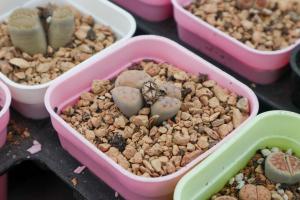When to Plant Fruit Trees in Minnesota: A Complete Guide
Planting fruit trees in Minnesota can be a rewarding experience. Not only do they beautify your yard, but they also provide you with a fresh supply of fruit. However, choosing the right time to plant can be crucial to the success of your fruit trees. Read on to discover when to plant fruit trees in Minnesota and how to ensure a bountiful harvest.
Planting Time
The best time to plant fruit trees in Minnesota is in the spring, after the soil has warmed up and the threat of frost has passed. Late April or early May is a good time to plant. If you are unable to plant in the spring, planting in the fall is also an option. Fall planting should be done at least six weeks before the first frost to allow the roots to establish.
Before planting, make sure the soil is moist but not saturated. Dig a hole that is at least twice as wide as the root ball and deep enough so the tree will be planted at the same depth it was in the nursery. Mix organic matter, such as compost or aged manure, with the soil taken out from the hole before backfilling around the roots.
Choosing the Right Tree
Choosing the right fruit tree for your area is essential for the tree's survival and optimal fruit production. Ensure the tree you choose is hardy enough to withstand Minnesota's harsh winters. The most common fruit trees in Minnesota are apple, cherry, peach, plum, and pear.
It's also important to ensure the tree will thrive in the soil and sunlight available in your yard. Most fruit trees require a minimum of six hours of direct sunlight every day. If your yard has heavy soil, consider planting a tree that is suitable for wet soil, such as plum, cherry, or peach.
When purchasing a fruit tree, make sure it is disease-resistant. Diseases such as apple scab, cedar apple rust, and fire blight are common problems in Minnesota. Choosing a disease-resistant tree will save you time and money in the long run by reducing the need for chemical treatments.
Caring for Your Fruit Tree
After planting your fruit tree, it's essential to care for it consistently to ensure its optimal growth and fruit production. Water the tree frequently during the first year, especially during dry spells. Mulch around the base of the tree to help retain moisture.
Pruning is also necessary for fruit tree care. Pruning helps to shape the tree and promote growth by removing dead, damaged, or diseased wood. Prune your fruit tree in late winter or early spring, before the buds start to grow. A properly pruned tree will be easier to manage and produce better fruit.
Fertilizing is also an essential part of fruit tree care. Apply a balanced fertilizer to the tree in the spring, before the buds start to grow, and in the fall, after the fruit has been harvested. Follow the manufacturer's instructions on how much fertilizer to use.
Conclusion
Planting fruit trees in Minnesota can be an enjoyable and rewarding experience. Choosing the right planting time, tree variety, and caring for the tree consistently can ensure the tree's survival and optimal fruit production. By following these simple steps, you can enjoy a bountiful harvest of fresh, delicious fruit from your own yard for years to come.

 how many times do yo...
how many times do yo... how many planted tre...
how many planted tre... how many pine trees ...
how many pine trees ... how many pecan trees...
how many pecan trees... how many plants comp...
how many plants comp... how many plants can ...
how many plants can ... how many plants and ...
how many plants and ... how many pepper plan...
how many pepper plan...






























